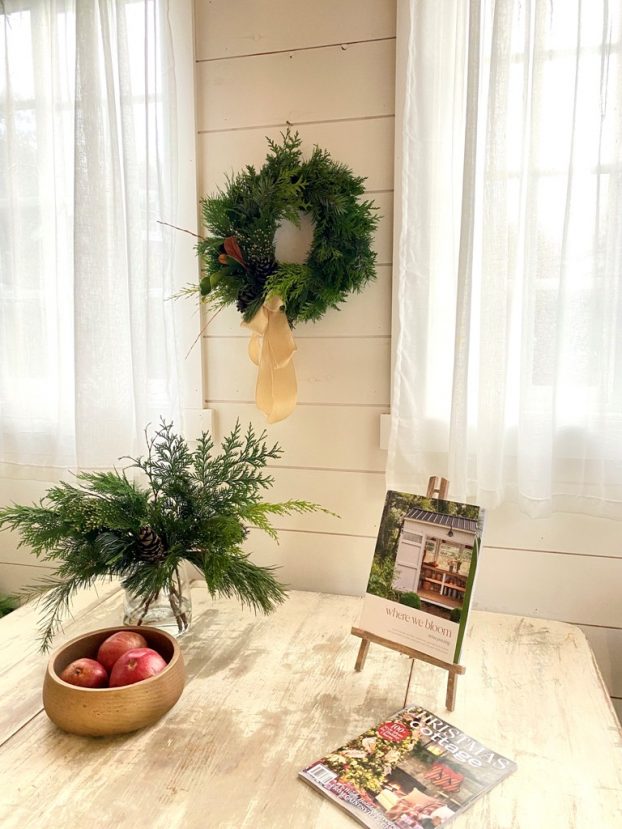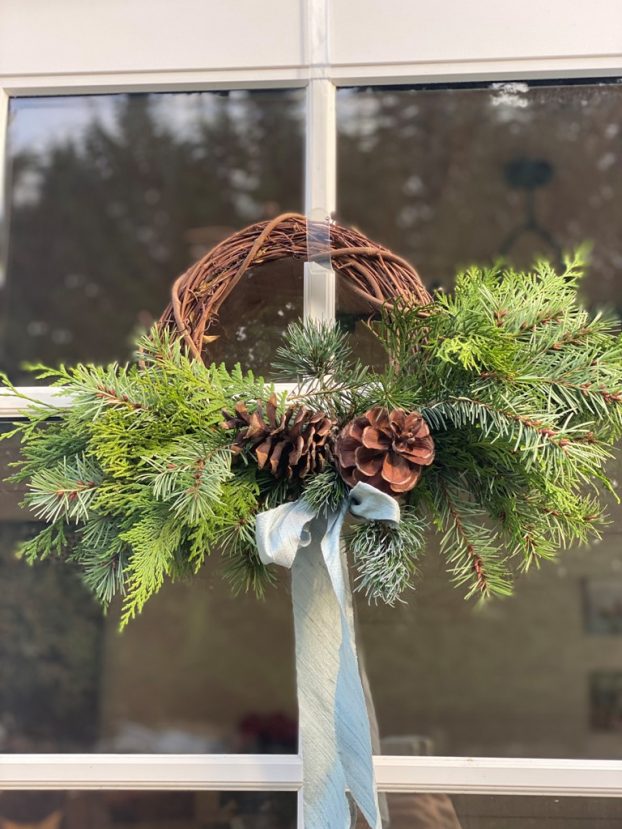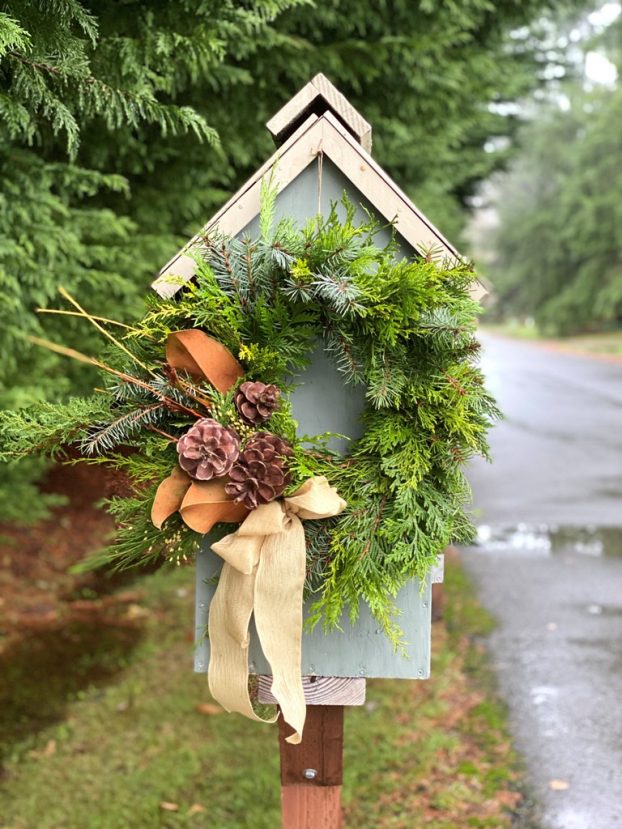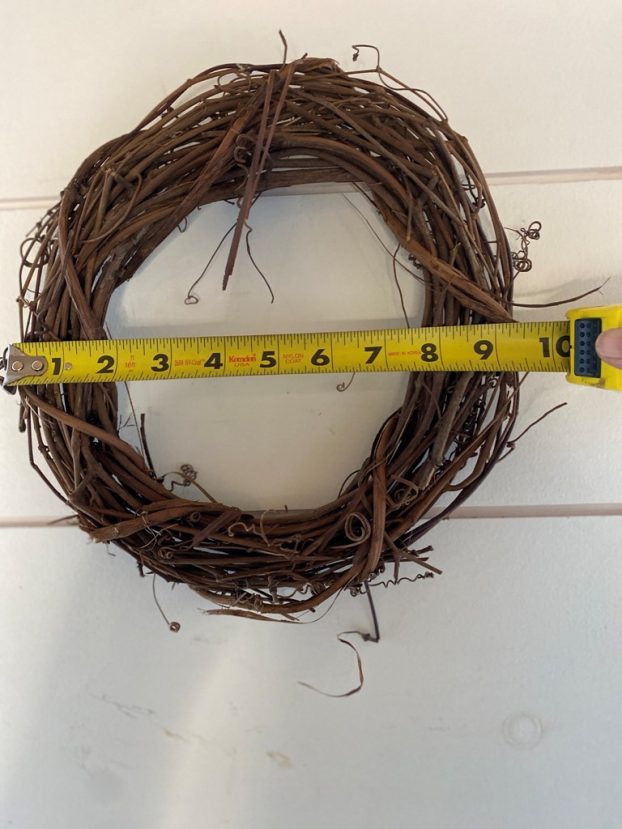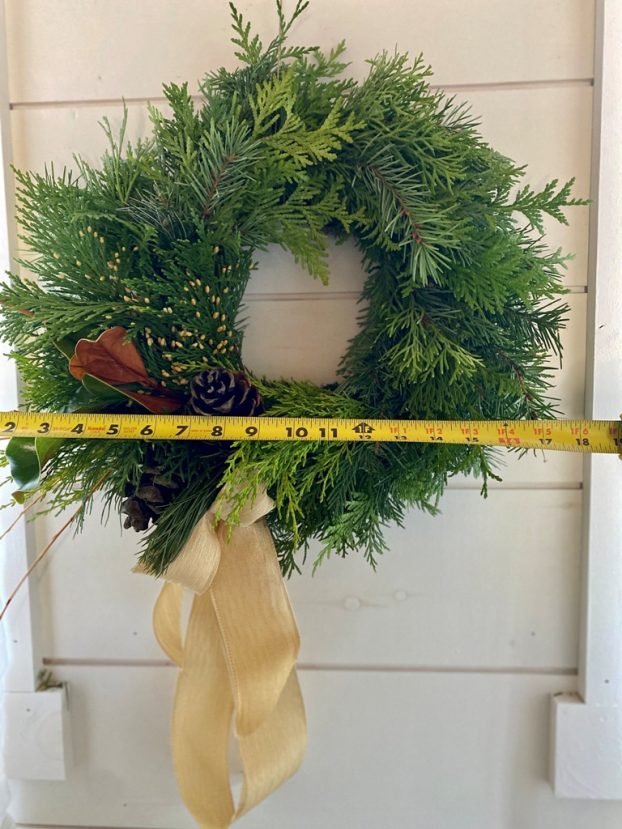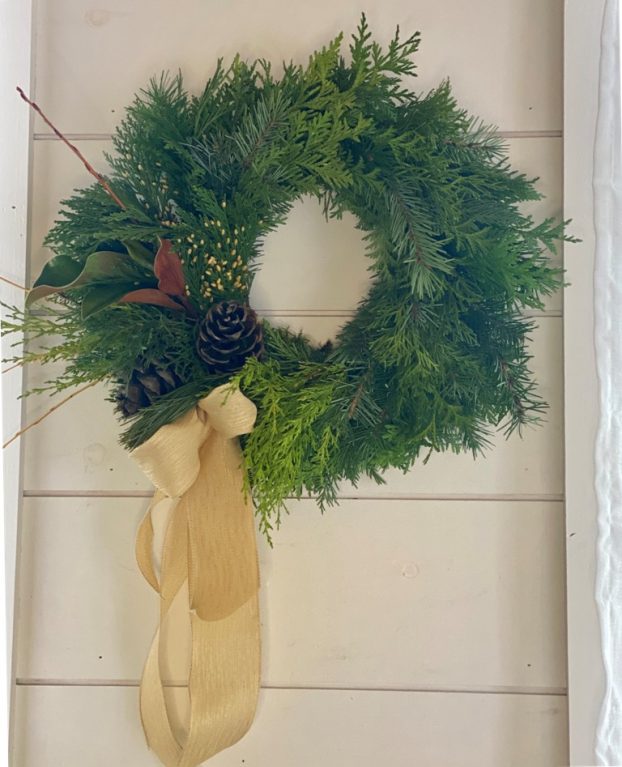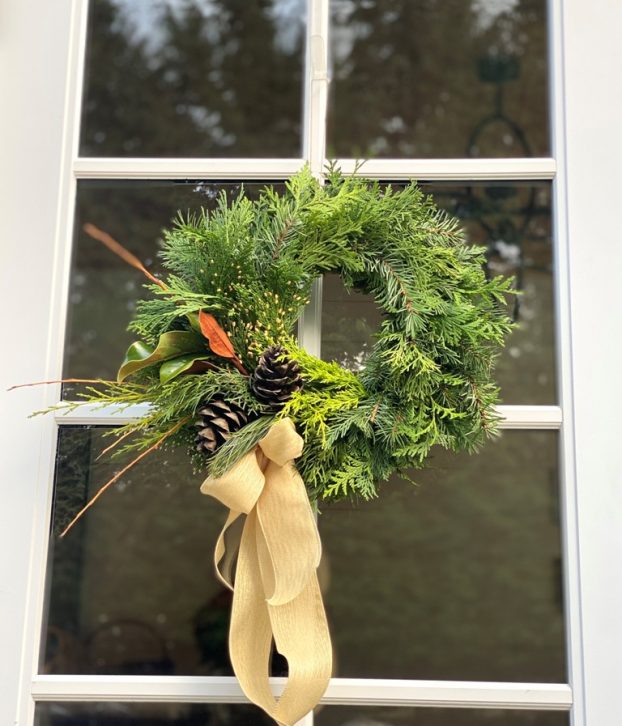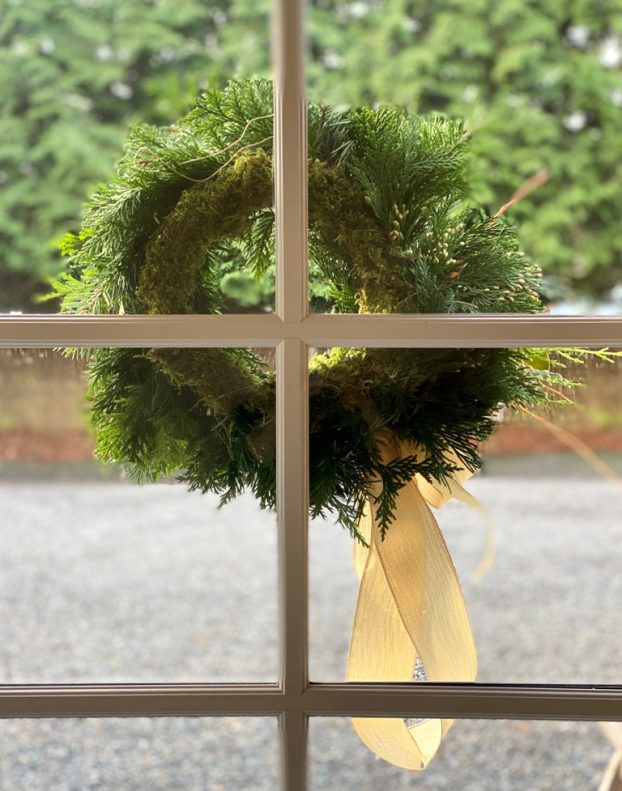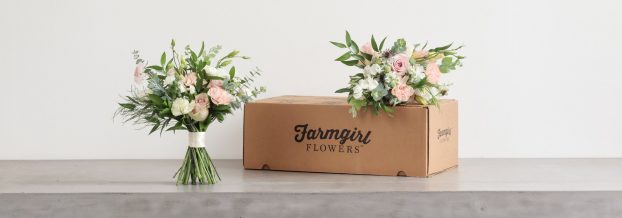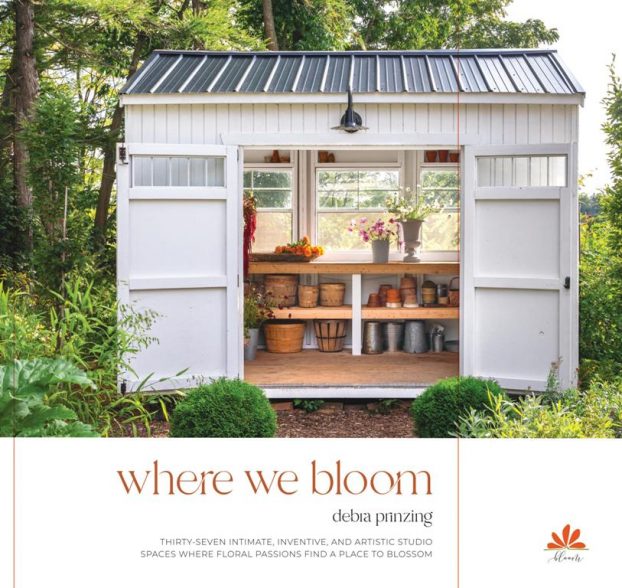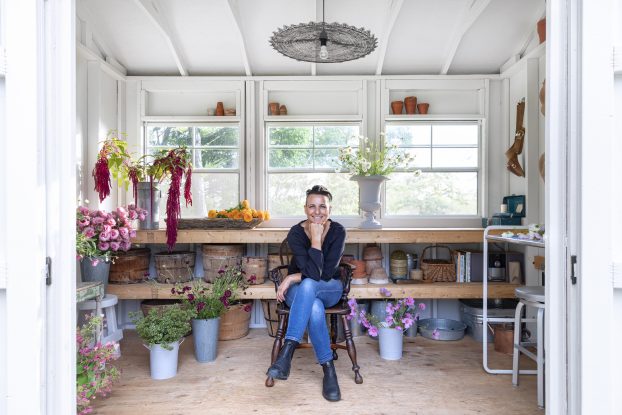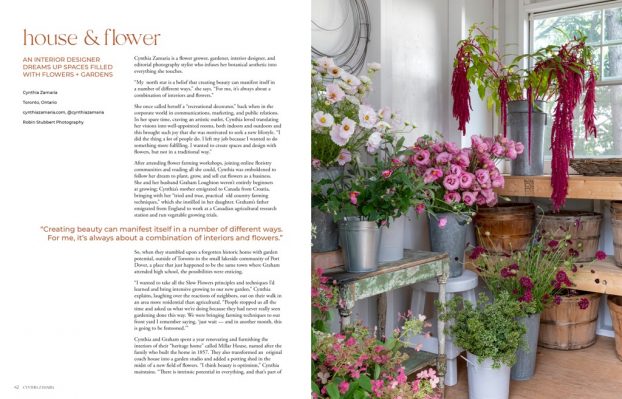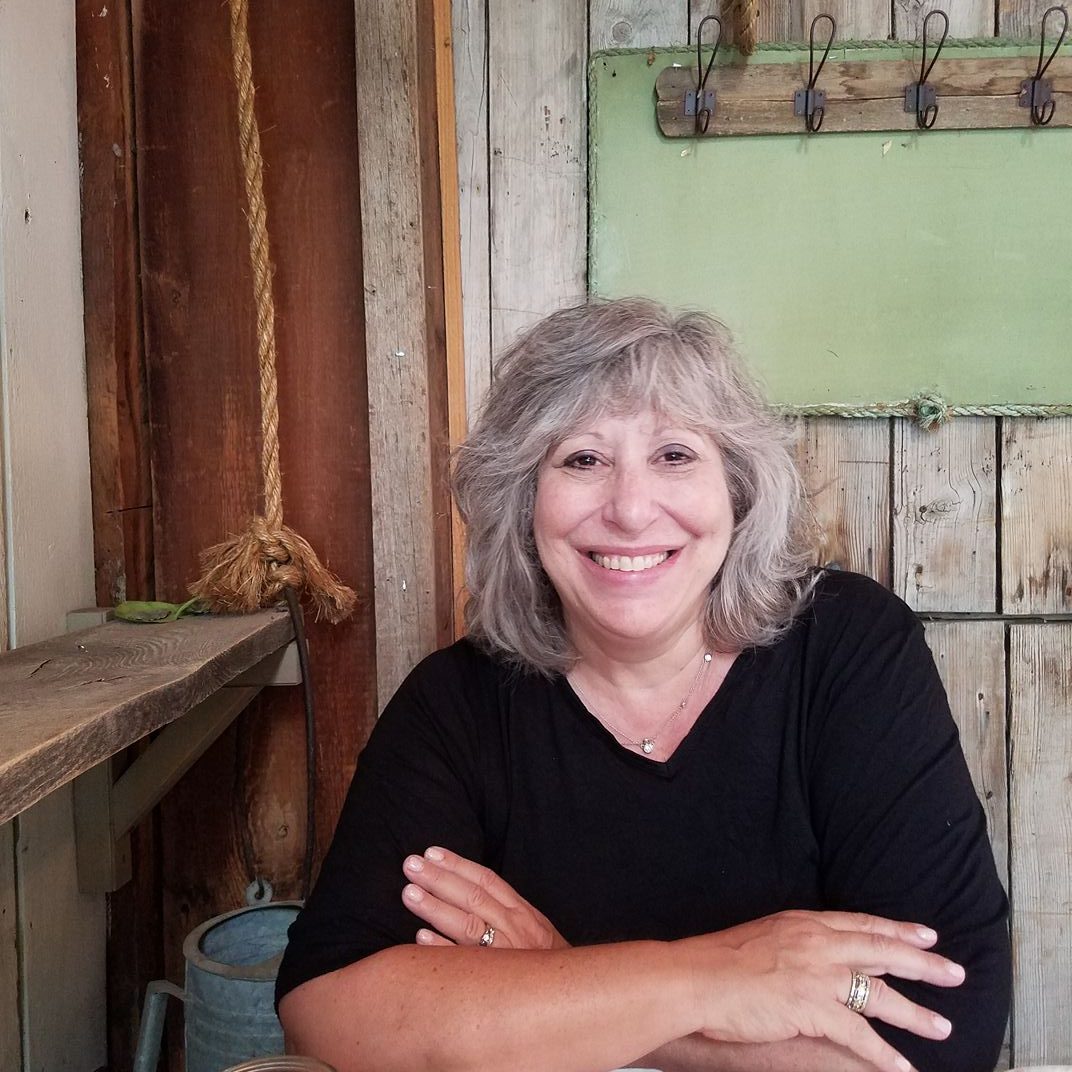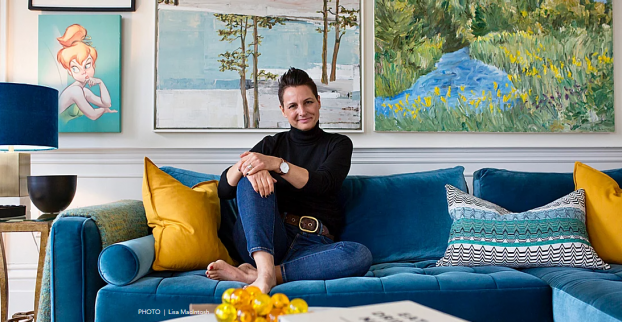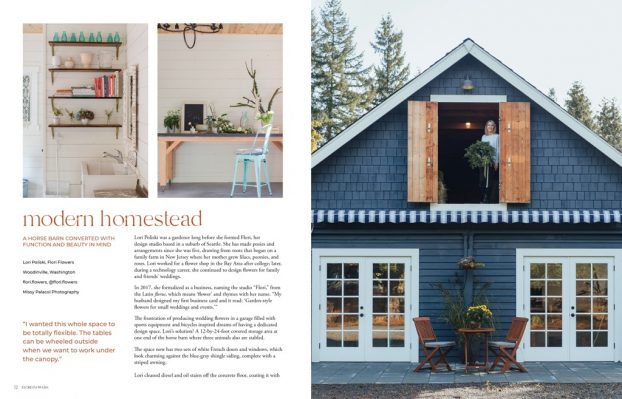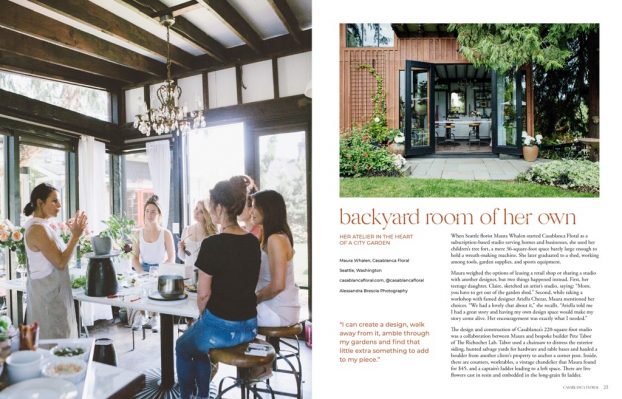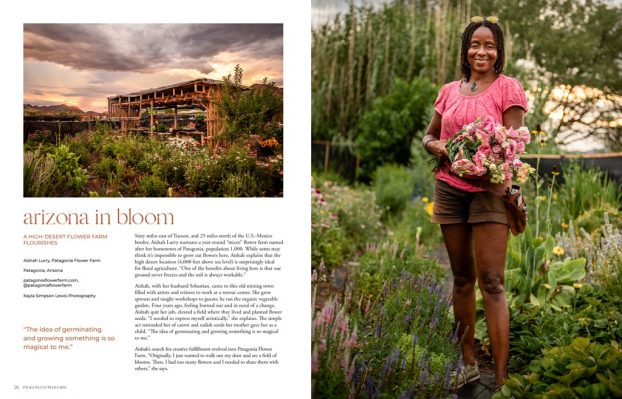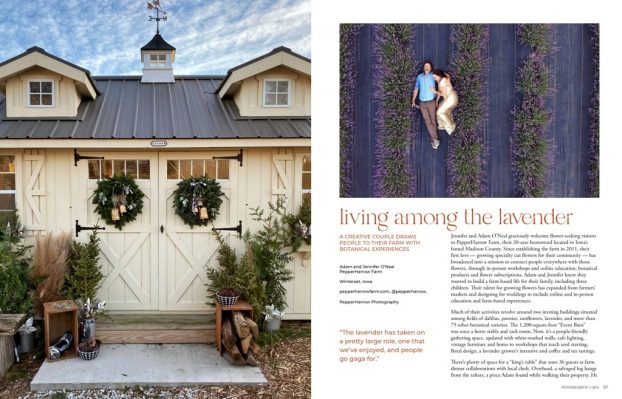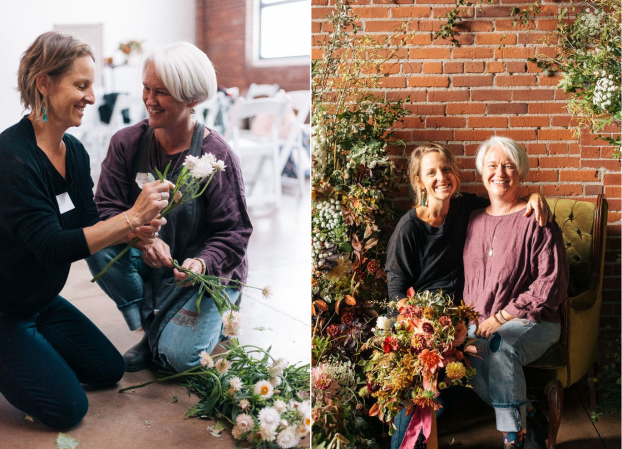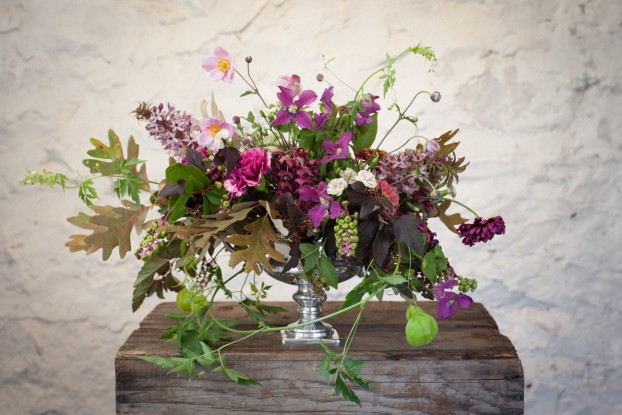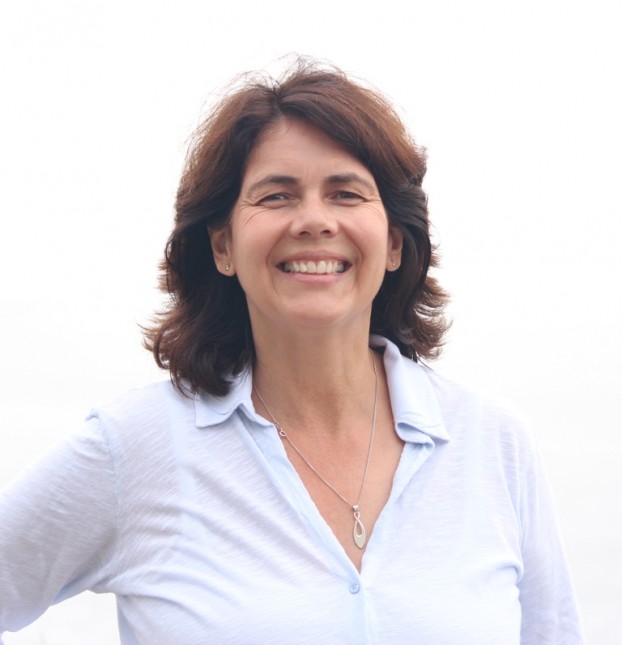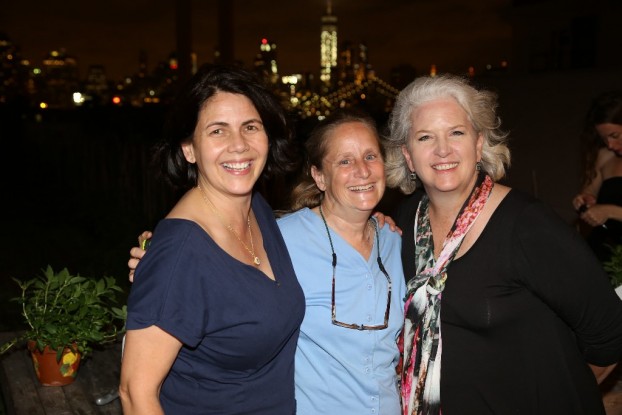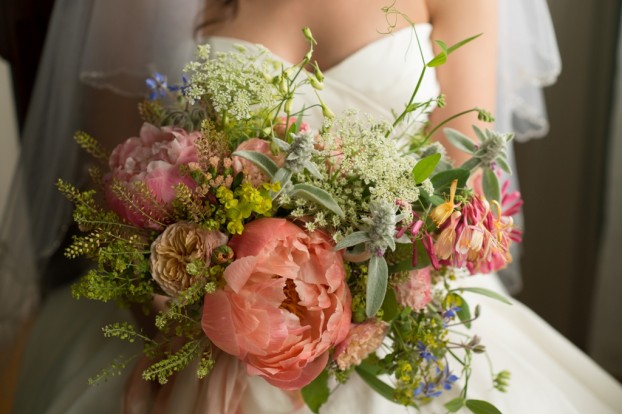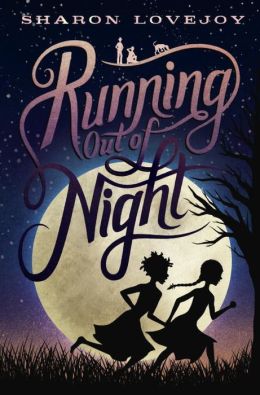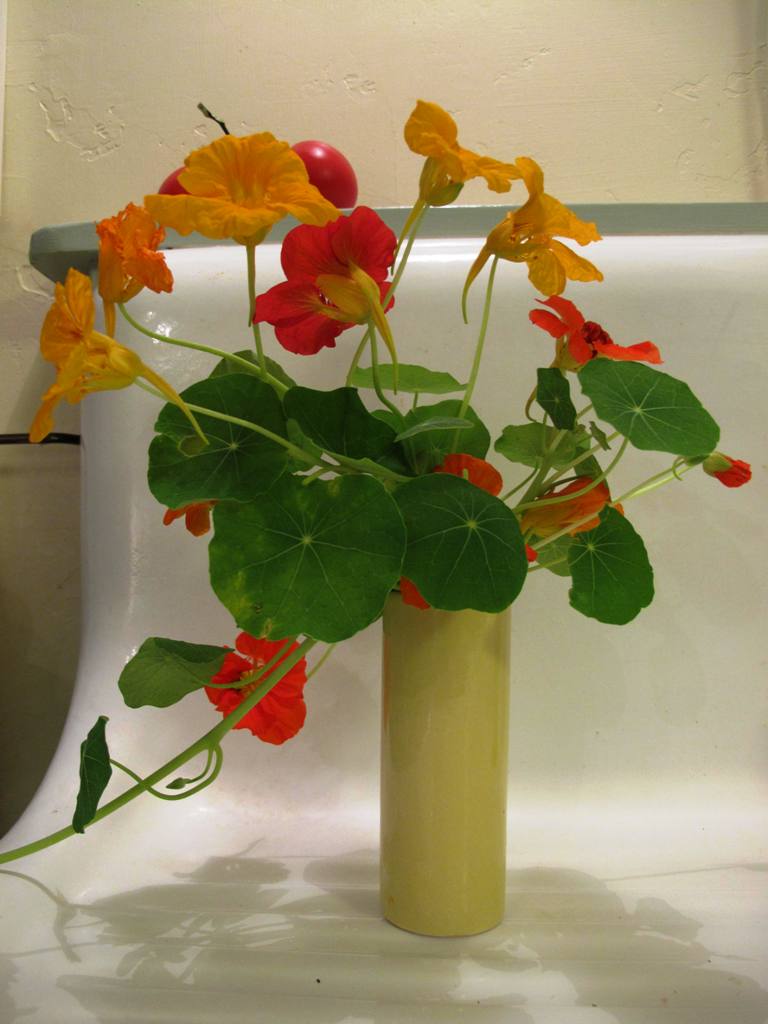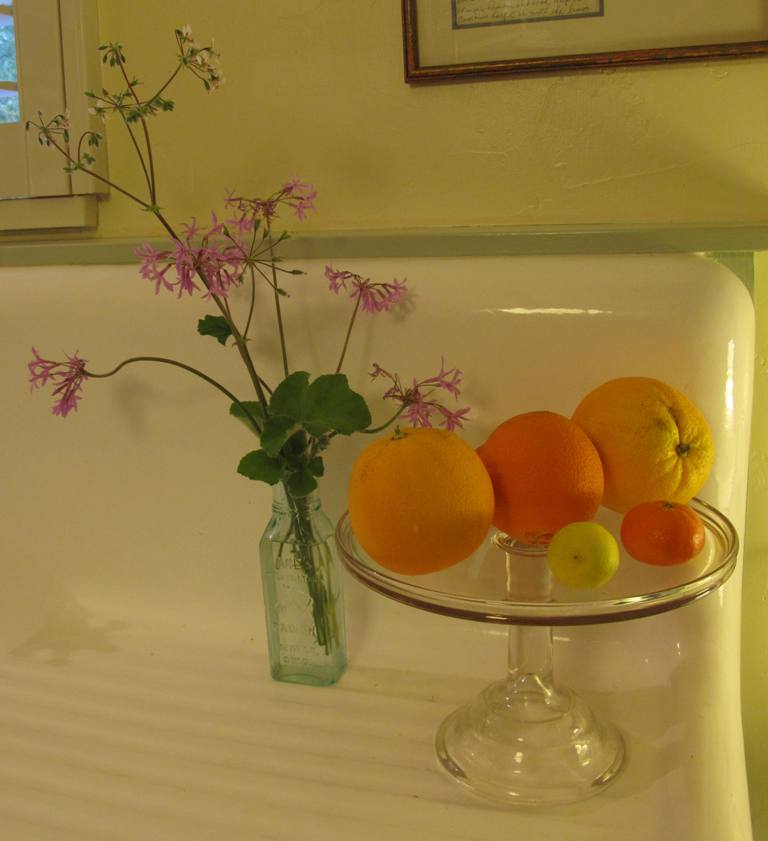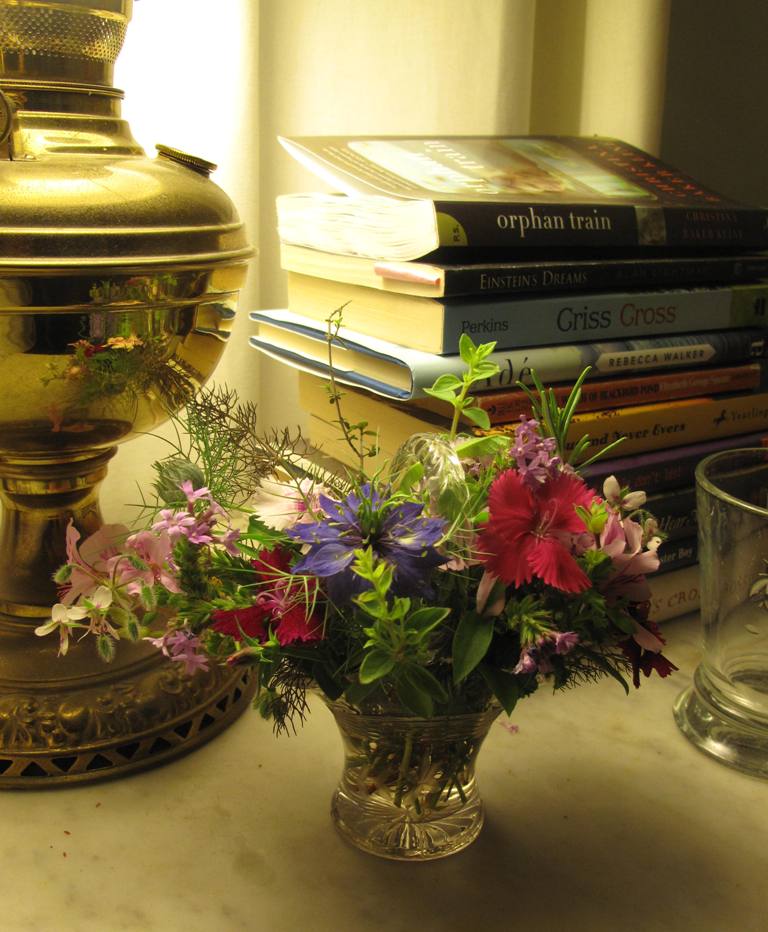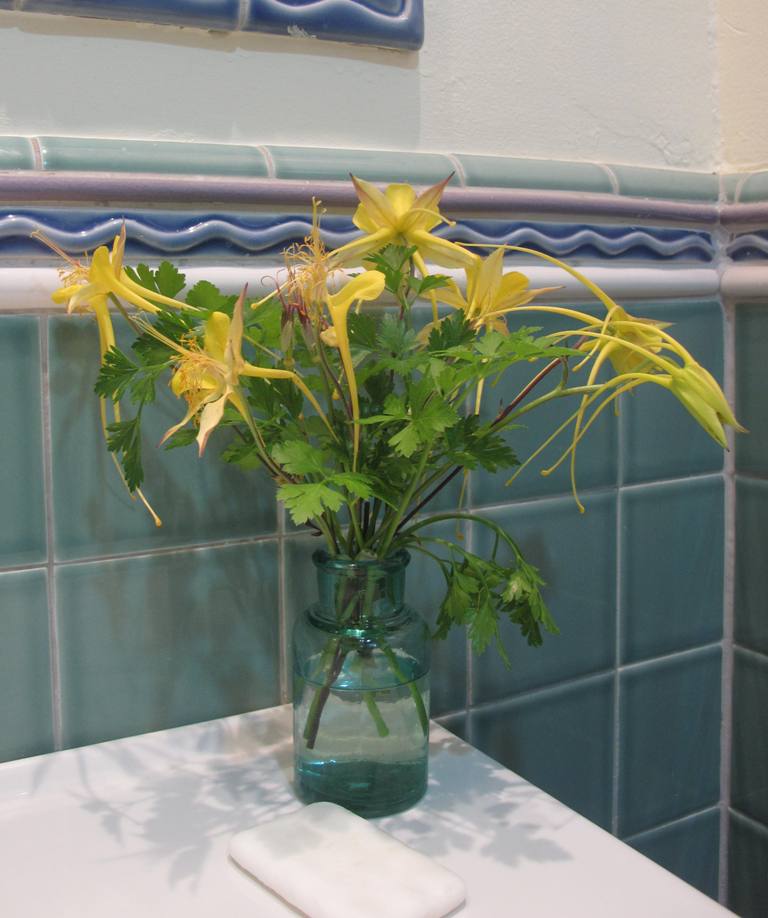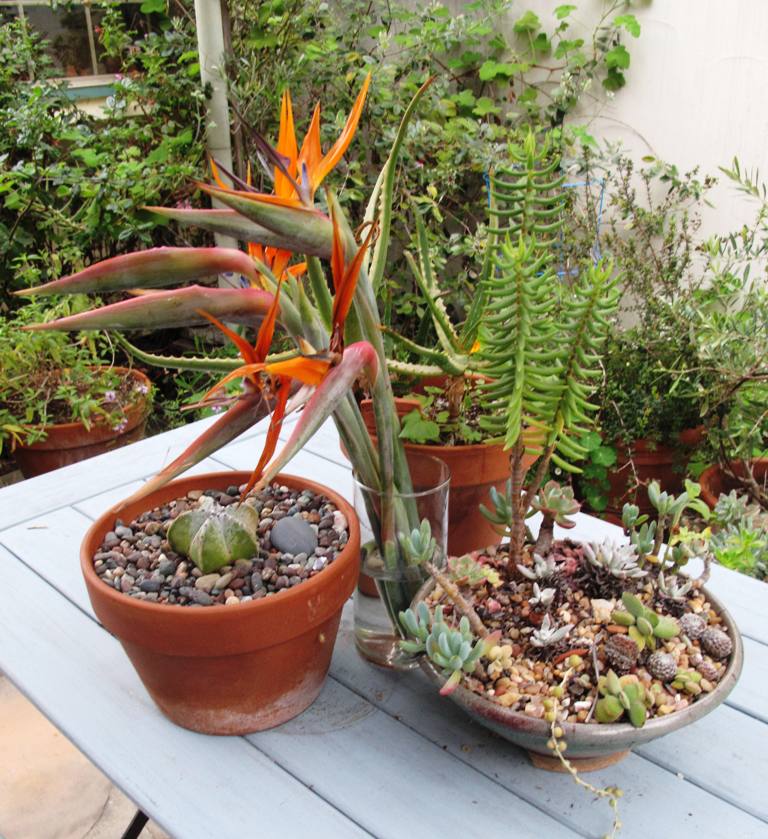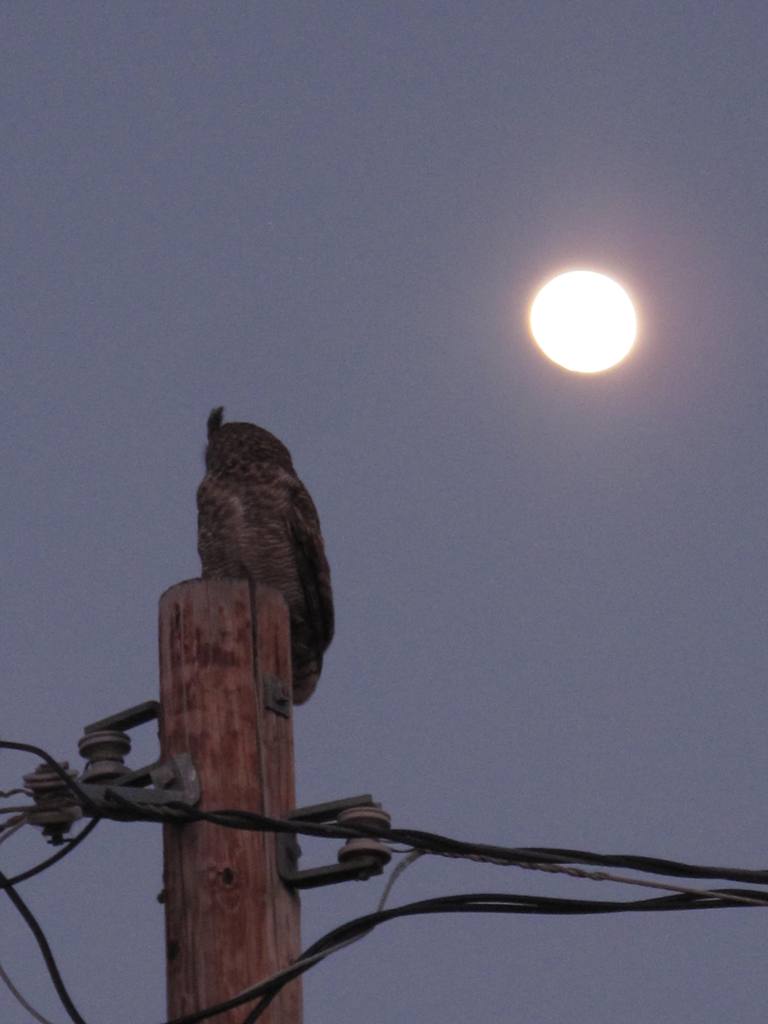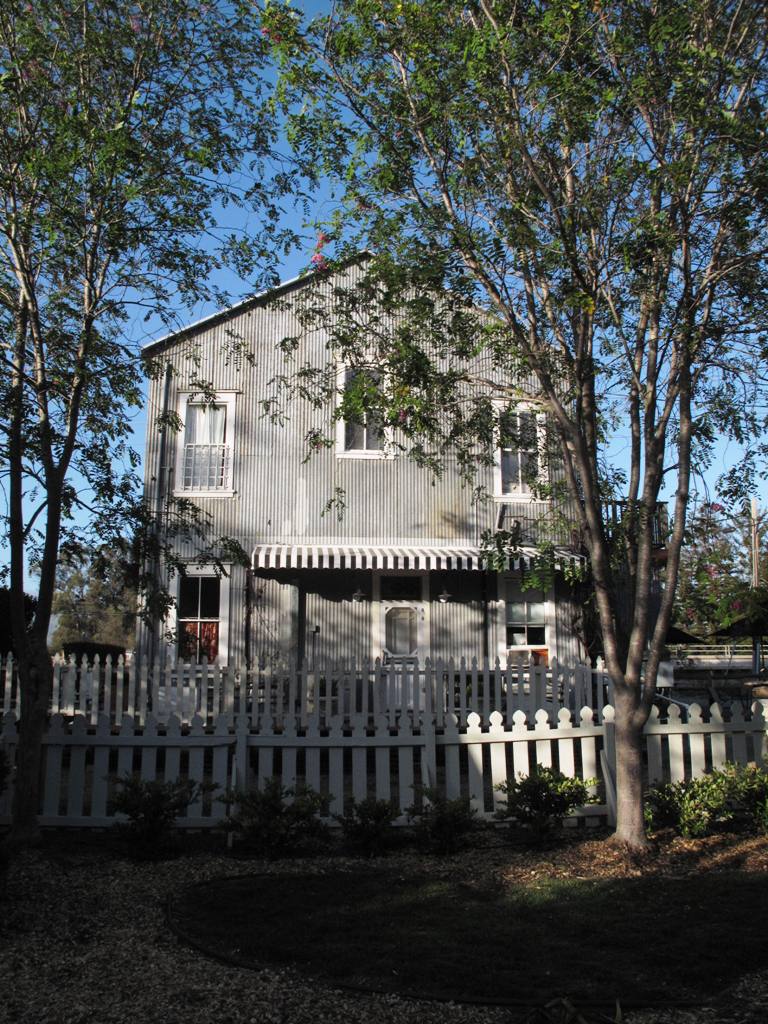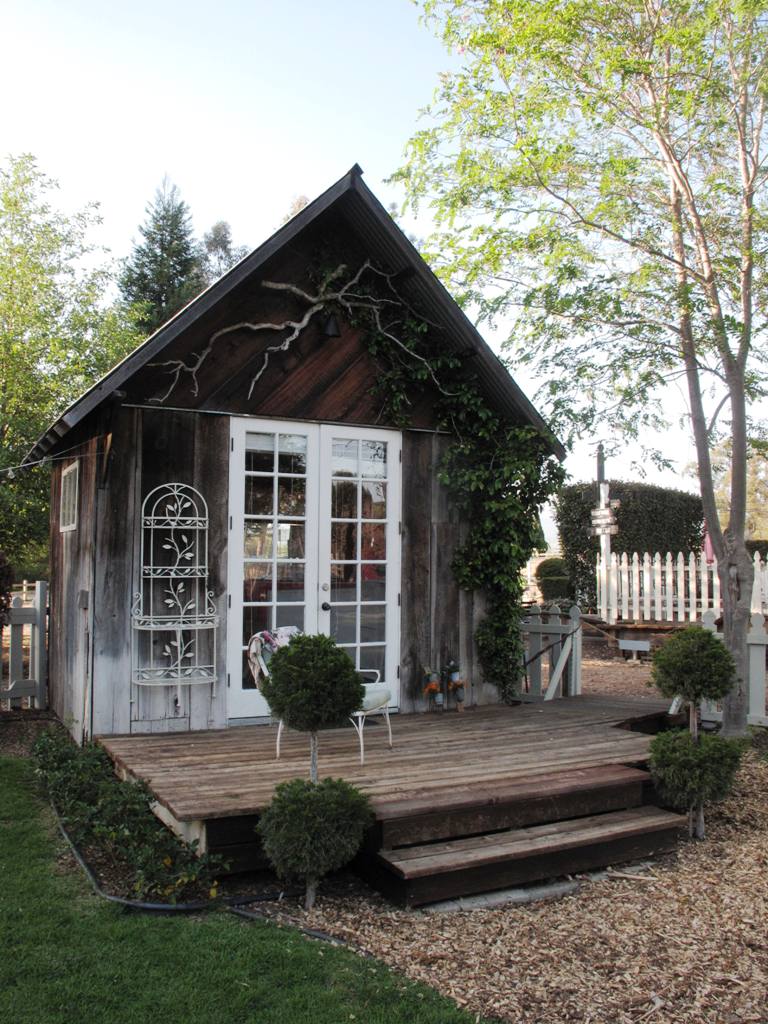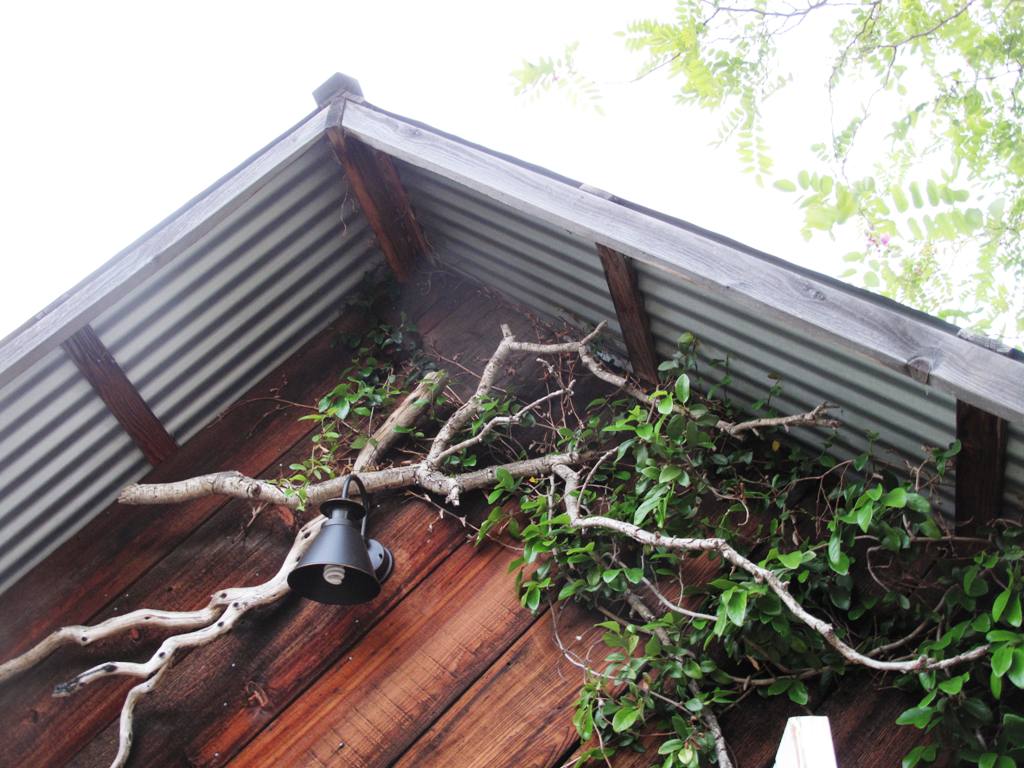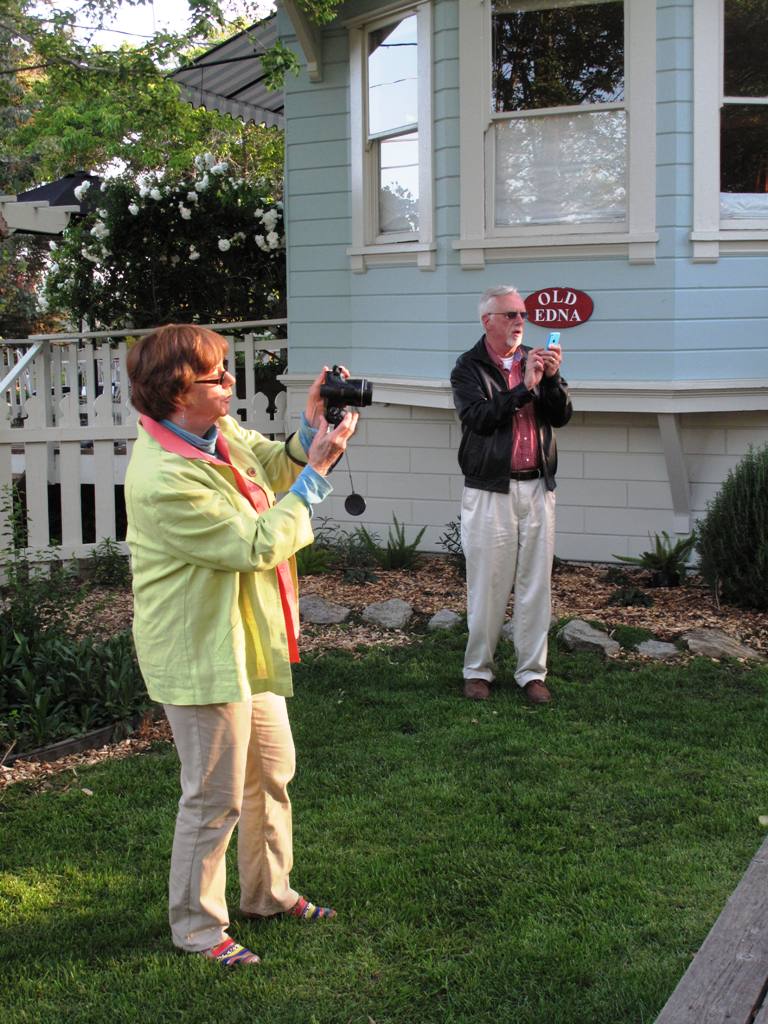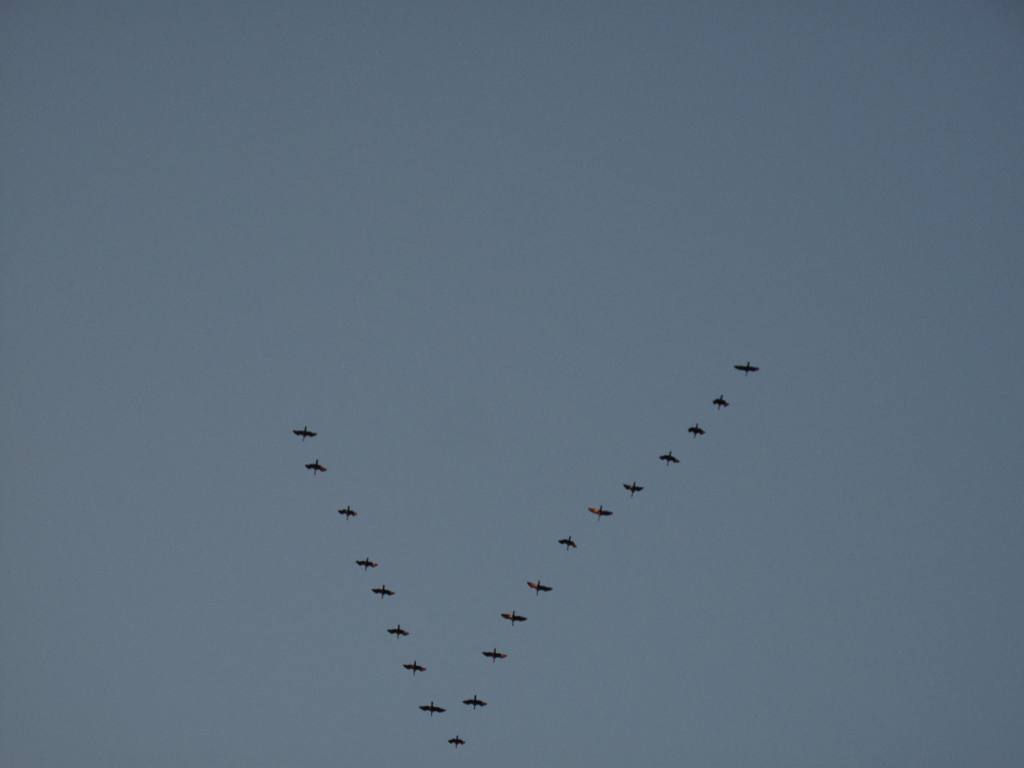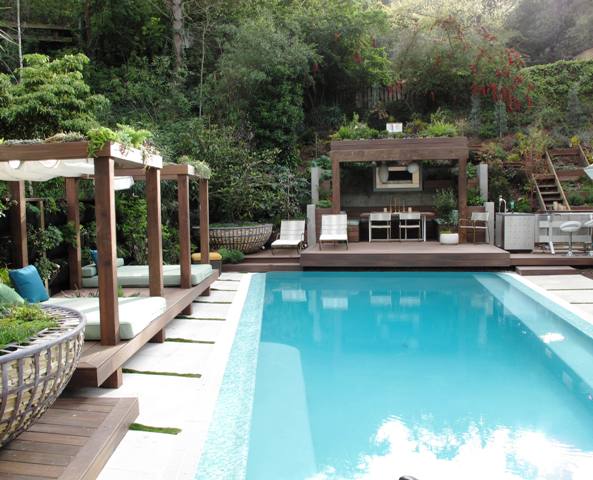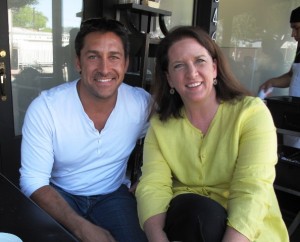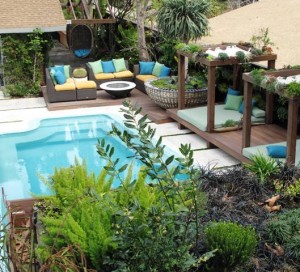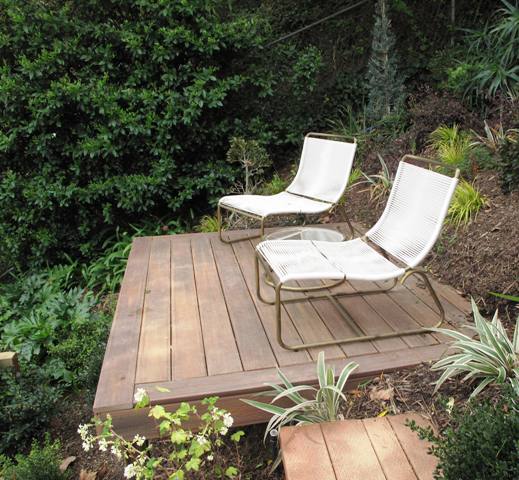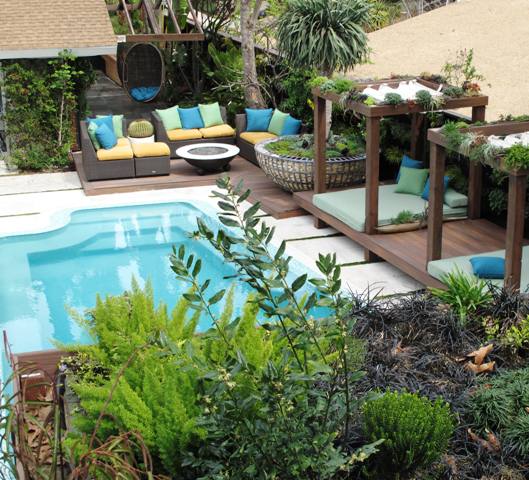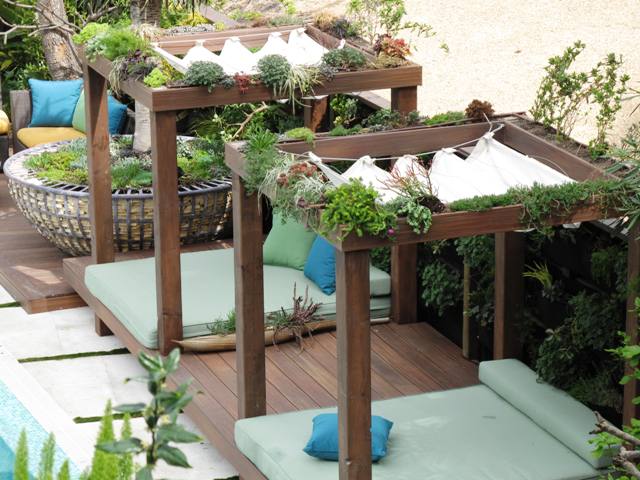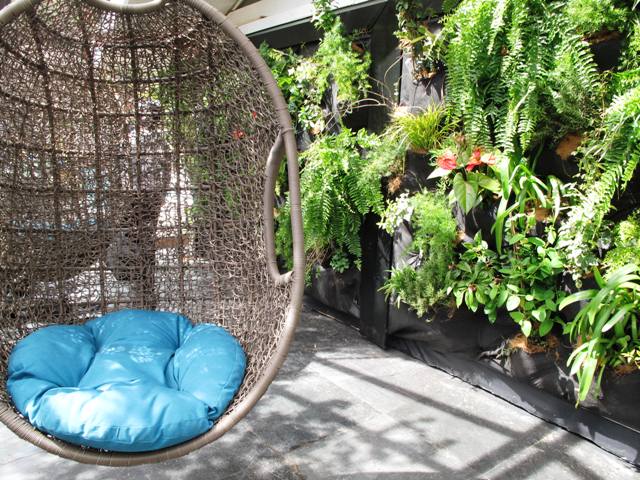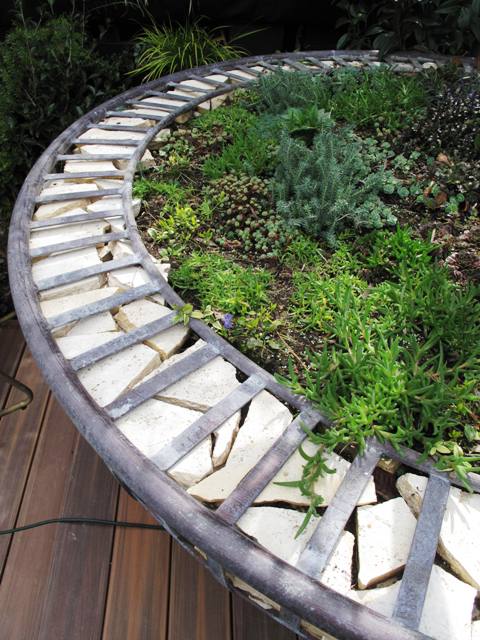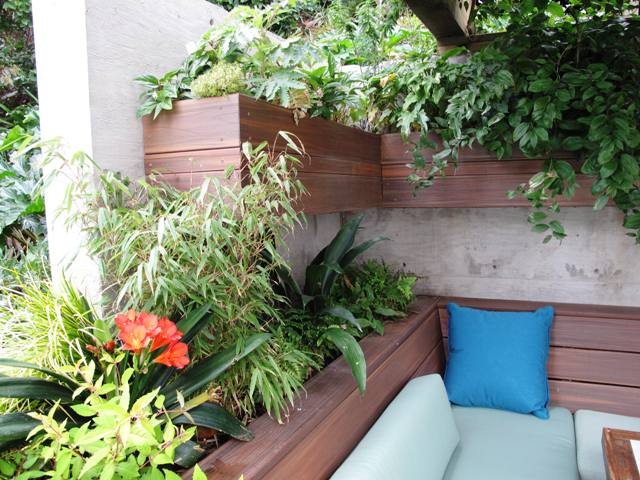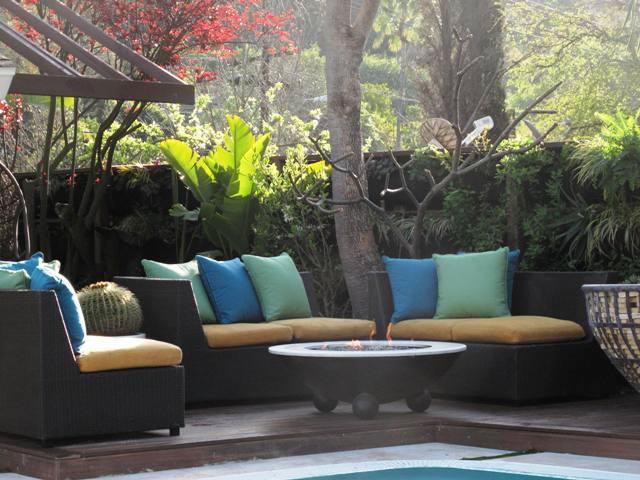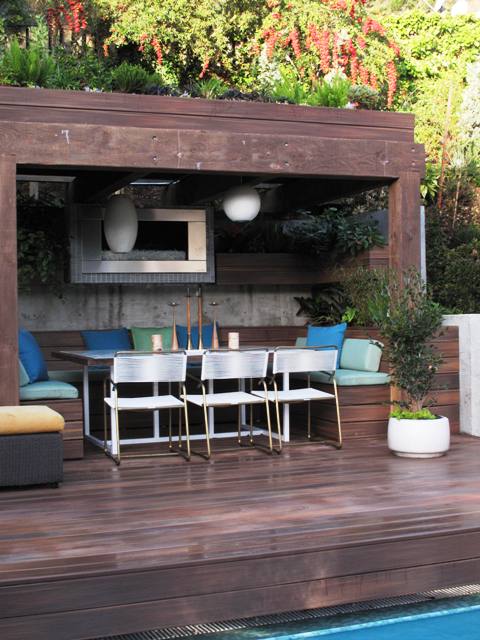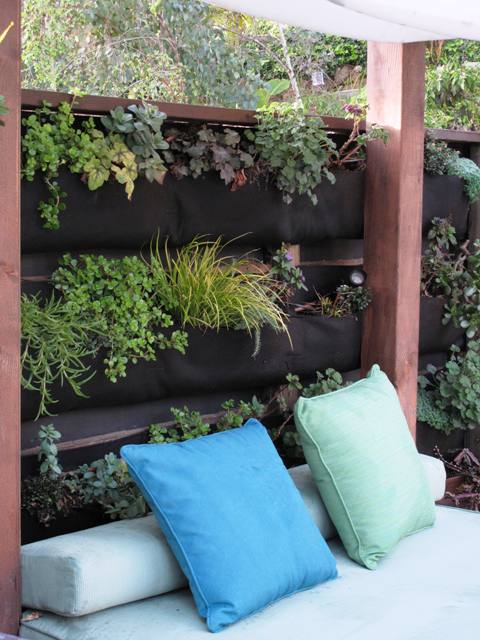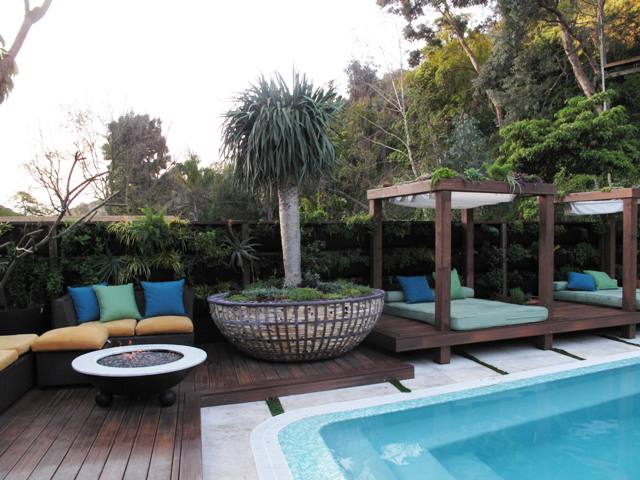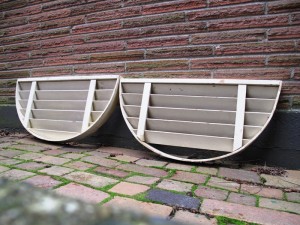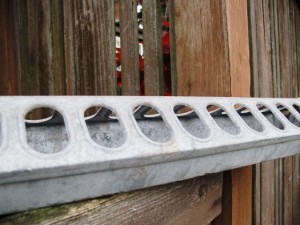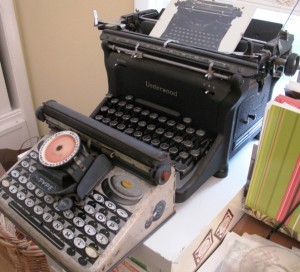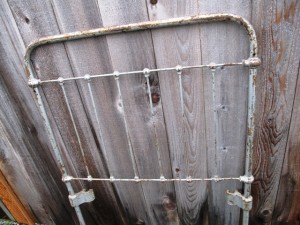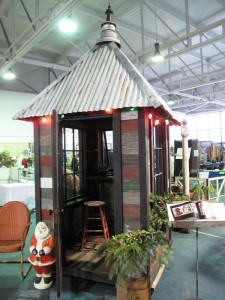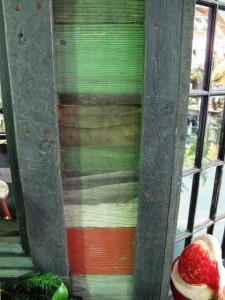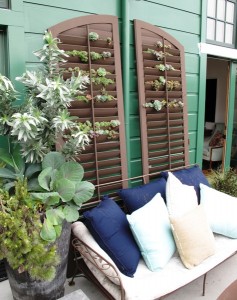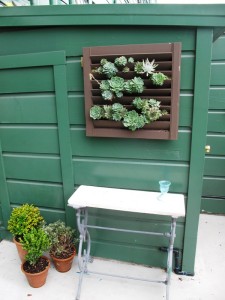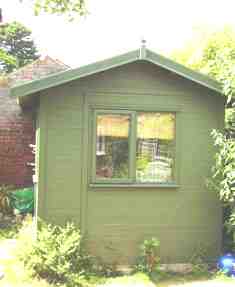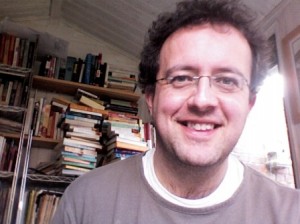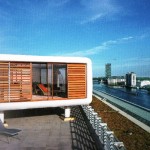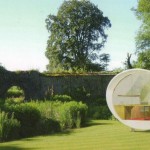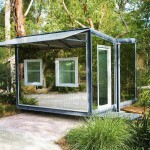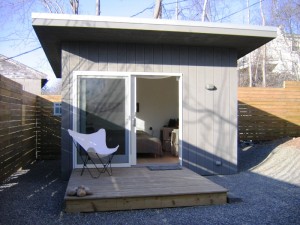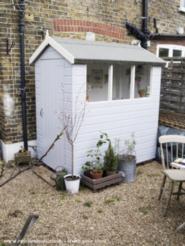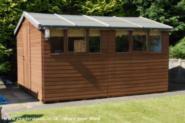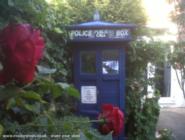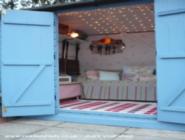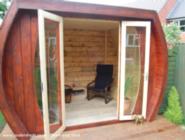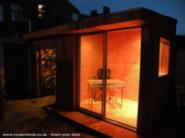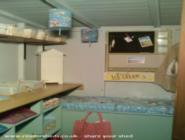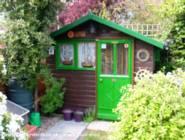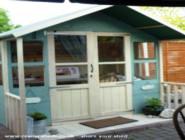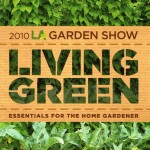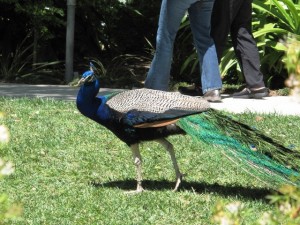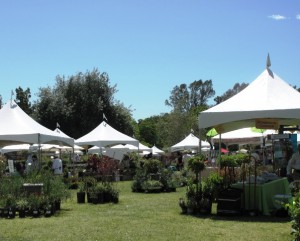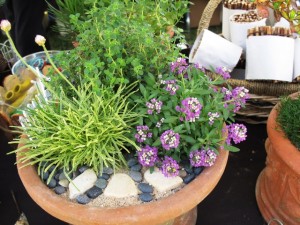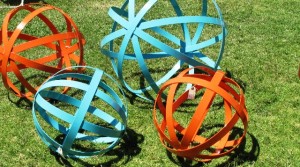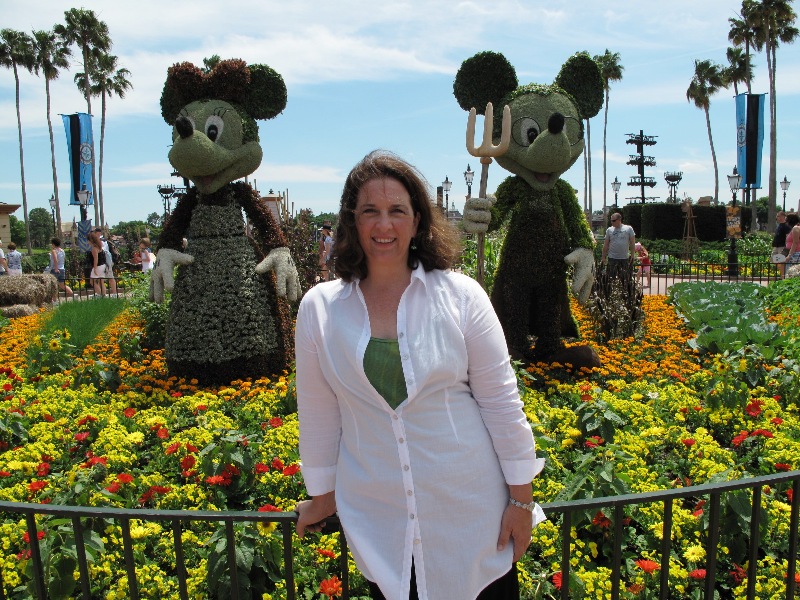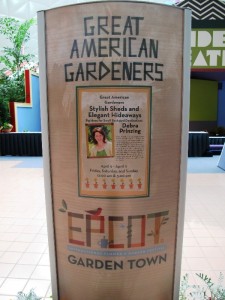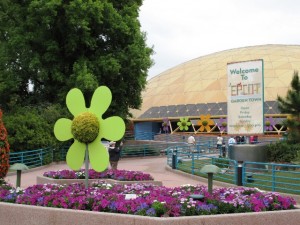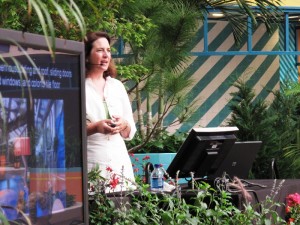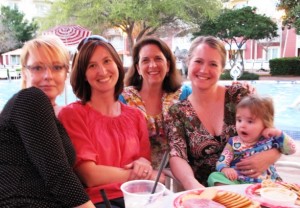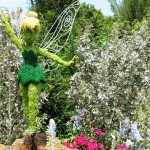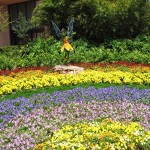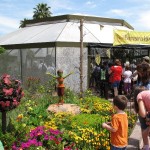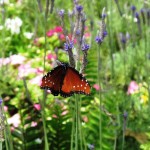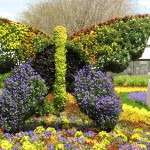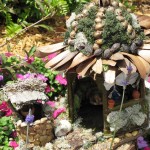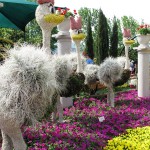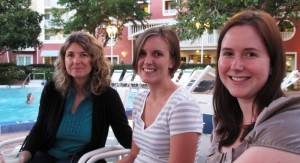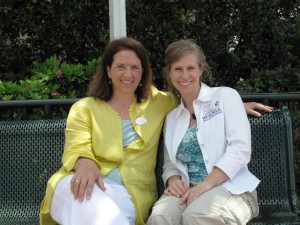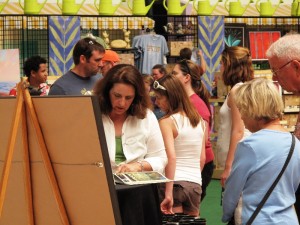Podcast: Play in new window | Download
Subscribe: Apple Podcasts | Podcast Index | RSS | More
Thank you so much for joining us today! It’s the first week of December and time to put away all the pumpkin and harvest decor aside and think about the floral palette for our winter holidays.
I’m so happy to introduce you to Lori Poliski of Flori LLC, a Slow Flowers member whose design studio is based in Woodinville, Washington, outside of Seattle.
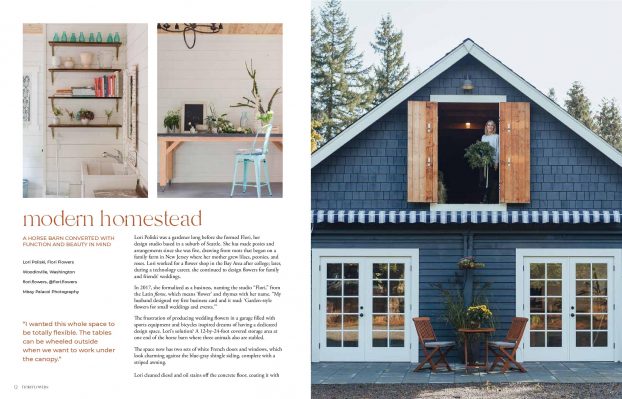
Lori is one of 37 creatives featured in my book Where We Bloom, published by BLOOM Imprint this past spring. In fact, her studio is the first to be featured in the opening pages of the book, in a six-page story titled: Modern Homestead – a horse barn converted with function and beauty in mind. Lori’s narrative shares her path to flowers, including the story of forming her business in 2017, choosing the studio name “FLORI,” from the Latin florus, which means ‘flower’ and rhymes with her name. You’ll want to check it out and you can order Where We Bloom from our website at bloomimprint.com or slowflowerssociety.com.
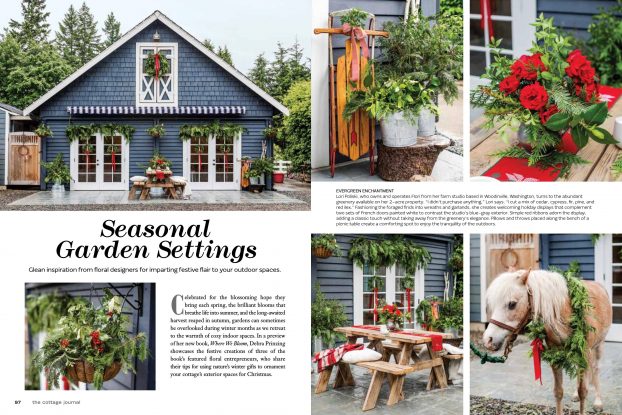
After the book’s publication, the editors of Cottage Journal asked Slow Flowers to create a holiday-decor-themed story featuring some of the creative spaces in the book. Lori transformed the exterior of her rustic horse barn, with blue-gray shingles and a whimsical striped awning, with holiday greenery, wintry props and red accents — you can find the story called “Seasonal Garden Settings” in the Cottage Journal’s “Christmas Cottage” issue, on newsstands now.
So Lori agreed to join me and not only share more about her floral enterprise, but teach us how she makes 100% compostable wreaths. A former teacher, she prepared for our conversation by listing all the specific conifer varieties and sources she planned to use. As one who nearly flunked out of winter plant ID class at the local community college, mostly due to learning about conifer identification, I am so appreciative of Lori’s handy ingredients list she shared with me.
Find and follow Flori at these social places:
Flori on Instagram
Flori on Facebook
That was so informative and inspiring. I used all of Lori’s wreath-making tips and methods this past weekend, starting with some repurposed grapevine bases and hemp twine. The base greenery was formed by Douglas fir branches, downed from a recent store. And since I spent several days on a Whidbey Island workcation last week — I’m so fortunate that I could arrange to purchase some beautiful novelty greens and broadleaf evergreen branches from Pam Uhlig of Sonshine Farm. A great way to kick off our holiday season and I hope you’re inspired, too!
Download Flori’s very useful Conifer Ingredient List:
Slow Flowers Summit 2022

Last week I told you that we opened ticket sales to the 2022 Slow Flowers Summit and the early response has been fantastic.
The 5th Slow Flowers Summit takes place in Lower Hudson Valley, located just 45 minutes outside of Manhattan. I’m so excited to welcome you to three Days of Amazing Programming on June 26-28, 2022. You can find all the details at slowflowerssummit.com, and you’ll be hearing a lot from me in the coming months, as we highlight our speakers, the immersive floral program and two iconic agricultural venues — Stone Barns Center for Food & Agriculture and the Red Barn at Maple Grove Farm.
If you act now and register before the end of December, you’ll receive the lowest price ever — $749. Registration to the 3-day event includes breakfasts, lunches, refreshments and an opening day welcome cocktail party reception. And if you bundle your Summit registration with the very special farm to table dinner at Blue Hill restaurant on Monday, June 27, 2022, we have an additional savings for you. You can find all the details at Slow Flowers Summit (www.slowflowerssummit.com).
Join the December Slow Flowers Member Meet-Up
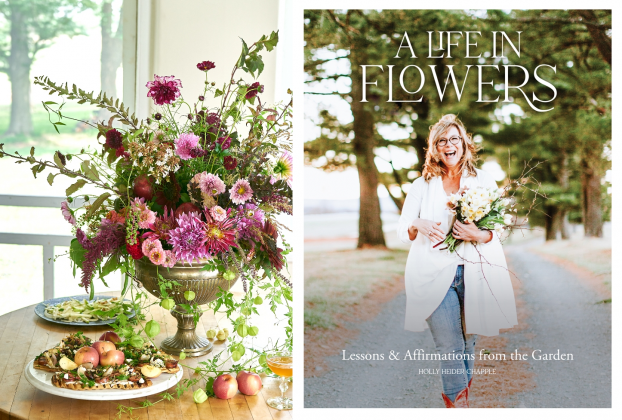
This week, on Friday, December 10th at 9 am Pacific/Noon Eastern, you’re invited to join me at our very special December Slow Flowers Meet-Up With Holly Chapple “A Life in Flowers”
Meet Holly Heider Chapple and learn about her debut book, “A Life in Flowers.“
An acclaimed floral designer and influencer, Holly shares inspiration from Holly Chapple Flowers’ studio in Virginia and Hope Flower Farm. Join us to hear all about Holly’s flower-filled story as designer and educator and her guiding philosophy: “The Answer is Always in the Garden.”
Holly will share a preview of “A Life in Flowers” and answer your questions!
And PS, we’ll drawn names from among the attendees for a few fun giveaways — just in time for the holidays!
Click this link to pre-register for the December member meet-up. We’re looking forward to a festive and inspiring gathering and I hope you join us!
Thank you to our Sponsors
This show is brought to you by Slowflowers.com, the free, online directory to more than 880 florists, shops, and studios who design with local, seasonal and sustainable flowers and to the farms that grow those blooms. It’s the conscious choice for buying and sending flowers.
Thank you to our lead sponsor for 2021, Farmgirl Flowers. Farmgirl Flowers delivers iconic burlap-wrapped bouquets and lush, abundant arrangements to customers across the U.S., supporting more than 20 U.S. flower farms by purchasing more than $9 million dollars of U.S.-grown fresh and seasonal flowers and foliage annually. Discover more at farmgirlflowers.com.
Thanks to the Association of Specialty Cut Flower Growers. Formed in 1988, ASCFG was created to educate, unite, and support commercial cut flower growers. Its mission is to help growers produce high-quality floral material, and to foster and promote the local availability of that product. Learn more at ascfg.org.
Thanks to Red Twig Farms. Based in Johnstown, Ohio, Red Twig Farms is a family-owned farm specializing in peonies, daffodils, tulips and branches, a popular peony-bouquet-by-mail program and their Spread the Hope Campaign where customers purchase 10 tulip stems for essential workers and others in their community. Learn more at redtwigfarms.com.
Thanks to the Seattle Wholesale Growers Market, a farmer-owned cooperative committed to providing the very best the Pacific Northwest has to offer in cut flowers, foliage and plants. The Growers Market’s mission is to foster a vibrant marketplace that sustains local flower farms and provides top-quality products and service to the local floral industry. Visit them at seattlewholesalegrowersmarket.com.

Thanks so much for joining us today! The Slow Flowers Podcast is a member-supported endeavor, downloaded more than 793,000 times by listeners like you. Thank you for listening, commenting and sharing – it means so much. As our movement gains more supporters and more passionate participants who believe in the importance of our domestic cut flower industry, the momentum is contagious. I know you feel it, too.
If you’re new to our weekly Show and our long-running Podcast, check out all of our resources at Slow Flowers Society.com and consider making a donation to sustain Slow Flowers’ ongoing advocacy, education and outreach activities. You can find the donate button in the column to the right at debraprinzing.com
I’m Debra Prinzing, host and producer of the Slow Flowers Show & Podcast. Next week, you’re invited to join me in putting more Slow Flowers on the table, one stem, one vase at a time. The content and opinions expressed here are either mine alone or those of my guests alone, independent of any podcast sponsor or other person, company or organization.
The Slow Flowers Podcast is engineered and edited by Andrew Brenlan. You can learn more about Andrew’s work at soundbodymovement.com.
Music Credits:
Betty Dear (Guitar and Cello); Even Dreams of Beaches; Turning on the Lights; Gaena
by Blue Dot Sessions
http://www.sessions.blue
Lovelyby Tryad
http://tryad.bandcamp.com/album/instrumentals
http://creativecommons.org/licenses/by-sa/3.0/
In The Field
audionautix.com









